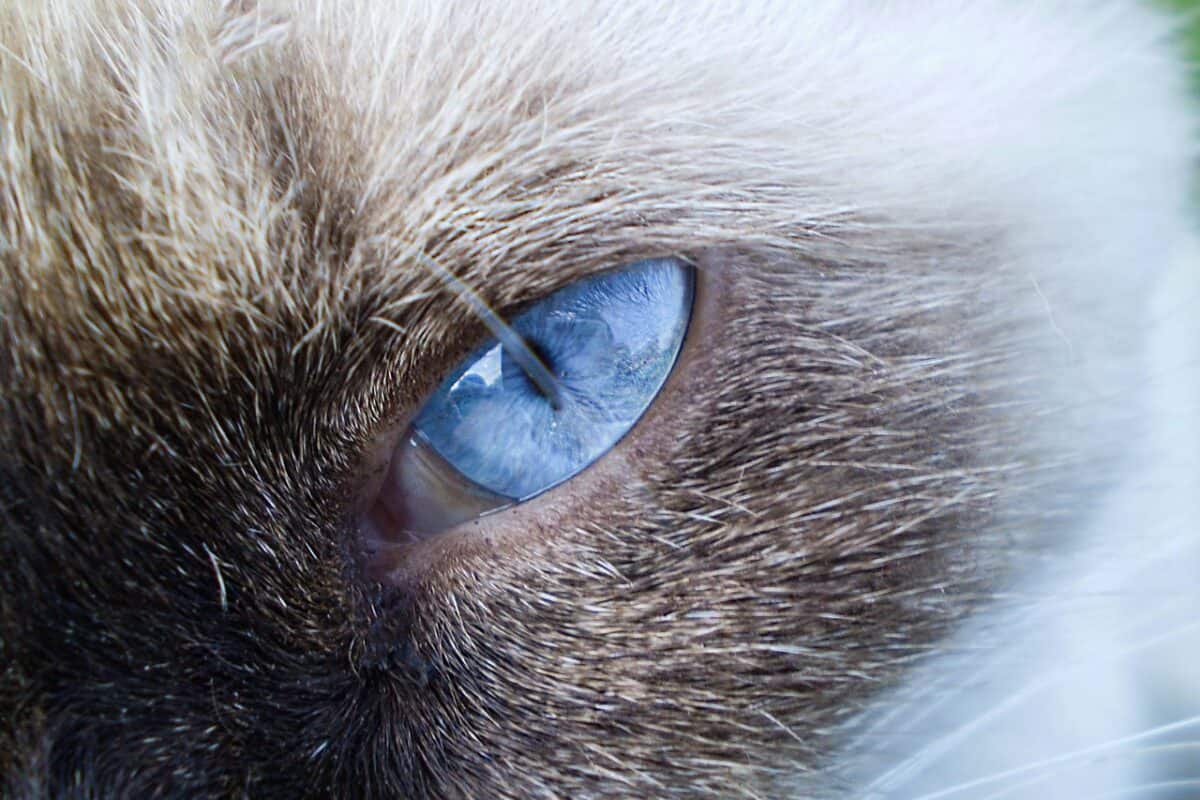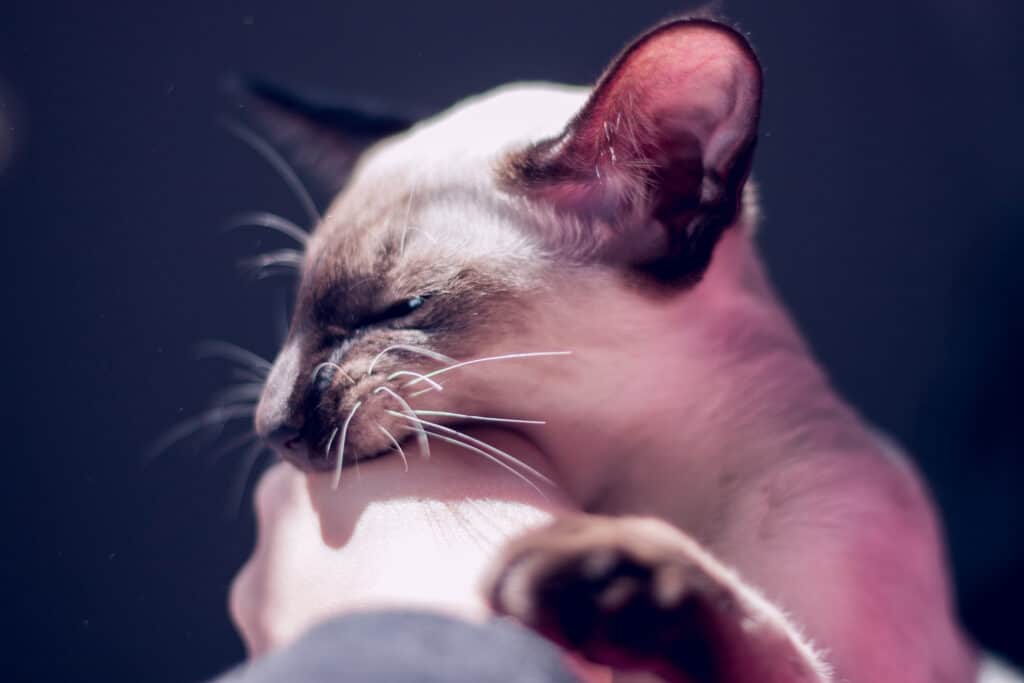Something about the Siamese’s captivating blue eyes makes one fall in love with them.
They are stunning and fairly unique as most domestic house cats don’t sport the baby blues that the Siamese does.
Unfortunately, the Siamese is also prone to eye problems. However, by being educated and proactive, you can stay ahead of the game regarding their care. So, let’s take a look at the common eye problems for Siamese cats.
Common Eye Problems in Siamese cats include feline convergent strabismus, progressive retinal atrophy, feline glaucoma, nystagmus, and eyelid masses.
This article will discuss those baby blues and what genetic eye commons are prominent in Siamese cats, so you know what to look out for.
We must stress that the information in this article is only for informational purposes. Do not attempt to self-medicate these conditions but always see a vet with any suspected diseases or have any health-related concerns about your cat.
Where do Siamese cats get their blue eyes?
The Siamese cats get their blue eyes because of a genetic allele that causes a form of albinism.
Most cats have pigmented cells scattered in both layers, but the alleles cause no pigment in the eye for the Siamese. So the blue eyes are actually because of an absence of pigment.
Siamese cat eye problems and what causes them
Unfortunately, the Siamese cats can have quite severe eye problems, and most of them are, to a degree, contributed to by the same albinism gene that gives them those beautiful blue eyes.
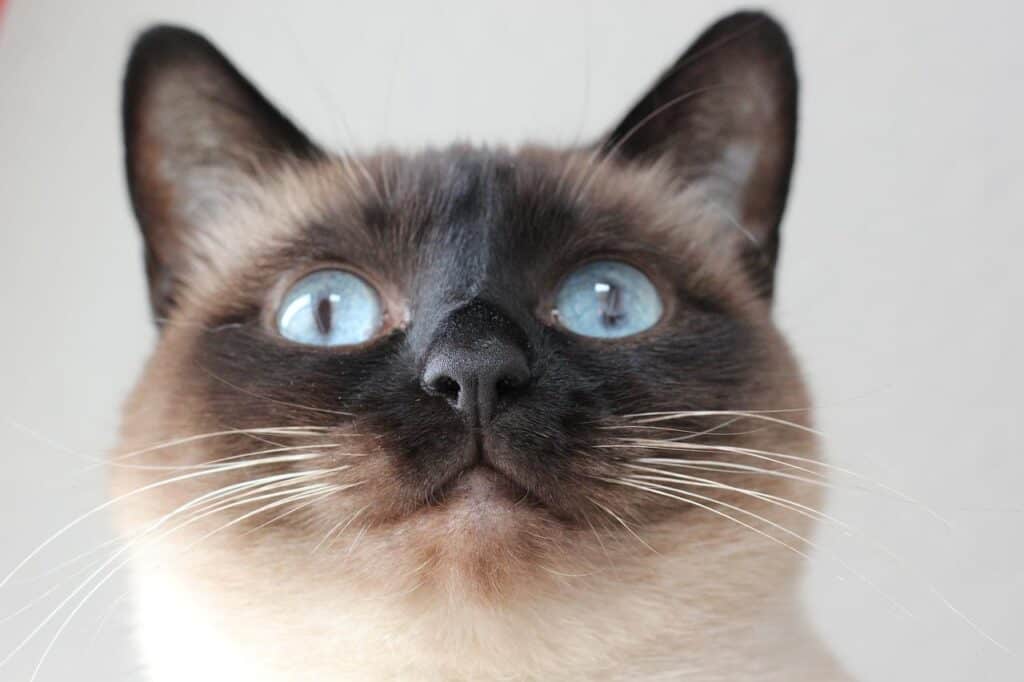
Feline Convergent Strabismus
Convergent strabismus, or crossed eyes, is pretty common in Siamese cats.
If a cat is born with crossed eyes, it is usually because of problems in how the eye muscles develop.
If your Siamese has crossed eyes and was born with it, they will not be bothered because the brain will correct it.
Actually, crosseyed Siamese used to be the norm, but it turned out that it was an undesirable feature. Over time, it was bred out by only crossing Siamese cats that did not have this genetic anomaly.
However, convergent strabismus can develop at any age in a cat’s life. If it develops later, it can be linked to a severe eye problem, and it’s wise to get your cat examined by a vet.
Read more about Strabismus in our article right here.
Treatment
A veterinary surgeon can correct the affected eye muscles to try and realign the eyes.
The treatment depends on the cause of the condition. If it’s caused by an infection (i.e., fluid causing pressure on the eye), a surgeon can drain the fluids and prescribe antibiotics.
Surgery and radiation will be prescribed if the cause is a tumor. Finally, the strabismus (crosseye’edness) may also be caused by an abscess that may form in the ear canal. Antibiotics can often solve this, and sometimes surgery may be needed.
Progressive Retinal Atrophy
Progressive Retinal Atrophy is an inherited disease where the eyes of a Siamese are predisposed to losing eyesight.
Most cats with this ailment will develop symptoms between 1 and 2.5 years old.
Night blindness tends to be the first sign of this disease, and it will usually worsen over a few years.
Many cats with the disease will have gone totally blind by age four. It is a recessive disease, meaning the cat has one copy of the gene from each parent.
Treatment
There are currently no treatments or cures for progressive retinal atrophy.
While no cure, antioxidants and vitamins can slow the disease down by reducing stress on the lens and delaying the cataract from forming.
Feline Glaucoma
Glaucoma is an eye disorder where liquid forms behind the lens and doesn’t properly drain. This causes strain on the optic nerve.
This pressure damages the nerve, which results in progressive loss of vision. The end-stage of this disease may be total or partial blindness.
The problem is that glaucoma is not always easy to notice in cats. Some signs include cloudiness of the eyes or uneven pupils (e.g., the pupil in one eye being larger than in the other eye)
Glaucoma is slow to progress, and most cats can carry on with their regular activities even though it can cause significant discomfort.
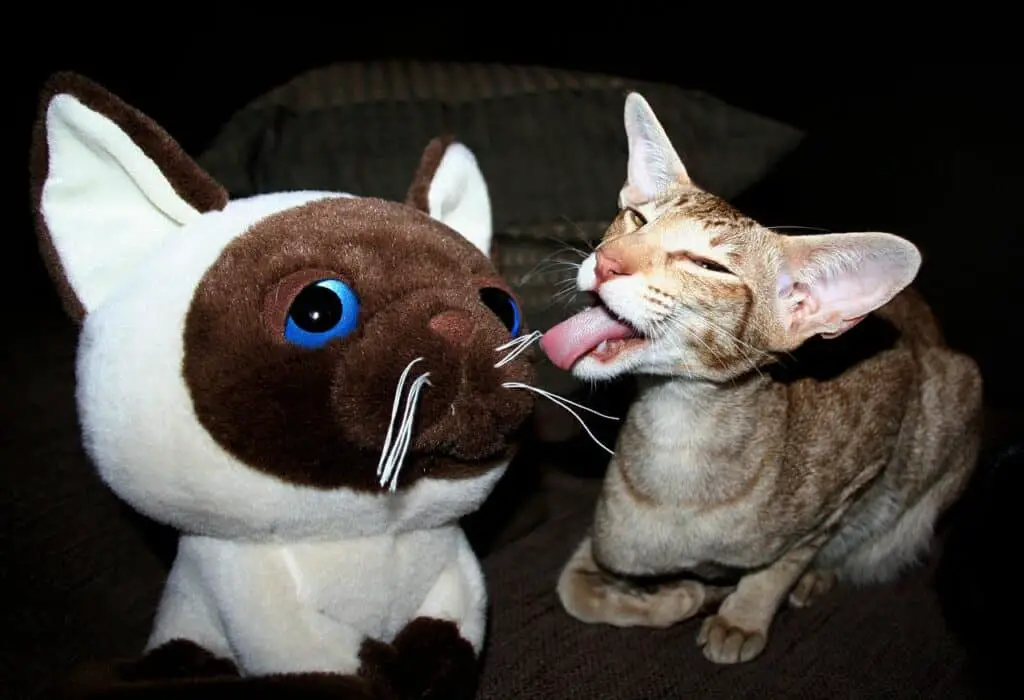
Treatment
There is no cure for feline glaucoma, but veterinarians can prescribe eye drops containing timolol or dorzolamide, which will help reduce the intraocular pressure.
If your cat has inflammation in her eye, steroids can be prescribed.
While progressive vision loss is common, it can often be delayed by using the aforementioned medications.
This condition will cause the cat so much discomfort and pain that it is better to surgically remove the eye in very severe cases.
Nystagmus
A relatively common birth defect in Siamese cats is nystagmus, involuntary eye movement. Nystagmus is a disease where the cat’s eyes shift from side to side rapidly.
This problem is caused by inbreeding, and it comes in two forms.
Jerk nystagmus causes the eyes to slowly shift from one side to the other in one direction and then quickly the other way.
Pendular nystagmus causes the eyes to move from side to side simultaneously.
Amazingly, studies have shown that, often, Siamese cats suffering from this condition do not have any discomfort or impact on their vision. The brain corrects the “extra” information received and re-builds the visual picture.
Treatment
Treatment for nystagmus usually depends on the cause of the disorder and the effect the condition has on your cat.
Some cats experience vomiting or failure to eat. In those cases, IV fluids are used to prevent dehydration. Anti-nausea medication can be prescribed as well.
In most cases, cats can live a normal life, and no treatment is required.
Eyelid Masses
Eyelid masses or tumors are also common in the Siamese and can cause tearing, swelling, discharge, and redness.
If you notice any of these symptoms, it is advised to contact your veterinarian right away.
Unfortunately, cats are very susceptible to all kinds of cancers, so these tumors can often be malicious. Treating them early will give your cat a better chance of recovery.
Treatment
Treatments for these masses vary depending on size and location.
Radiation therapy and cryotherapy are often used because these tumors can be painful and bothersome. They can also be surgically removed. Removing the mass will help to prevent secondary problems.
Radiation therapy can be used when surgery is not an option. Radiation risks damage to the eye, and in some severe cases, removal of the entire eye may be the best treatment.
Conclusion
Although a Siamese’s eyes are beautiful and one of their most defining features, they are prone to disease.
Eyelid masses, nystagmus, Feline glaucoma, renal atrophy, and feline convergent strabismus can all plague the life of your Siamese cat.
However, with some knowledge of the risks, conditions, and treatments, you can look out for them and consult a vet if you suspect any of the above issues.
Love reading about Siamese cats?
Have a look at our other great articles!
Our most popular article:
Introduction to Siamese Cats
Everything you need to know.
Or have a look at these popular reads from our website…
-

Why Do Siamese Cats Always Have Blue Eyes?
If you’ve ever looked up from work to see your cat staring at you, then the first thing you probably […]
-
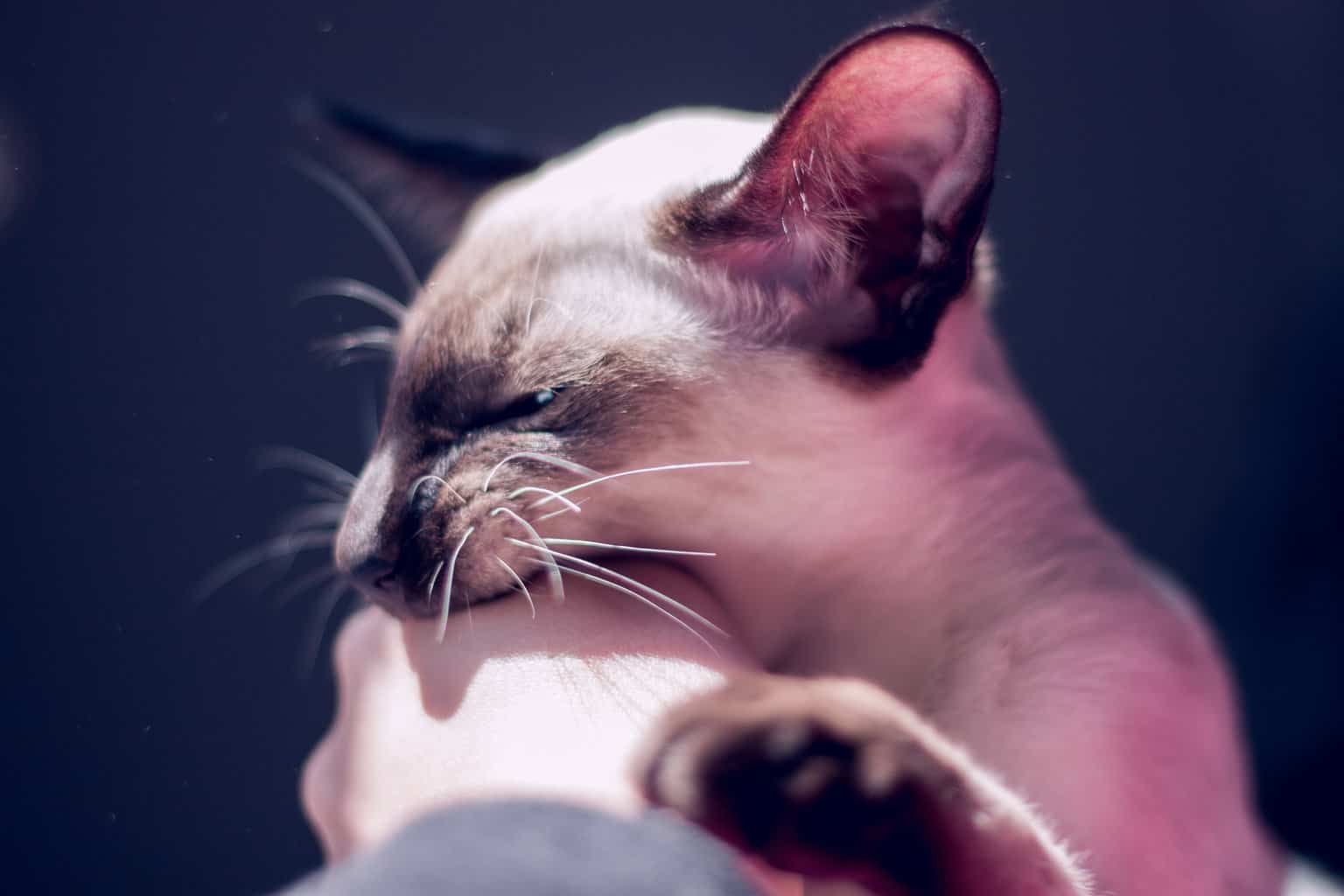
Why Does Your Siamese Cat Bite So Much?
Siamese cats are a popular breed for their distinct beauty and character, so you might be surprised to find out […]
-

Wedgehead Siamese Cats Versus Traditional Siamese Cats
Siamese cat breeds are consistently ranked in the top 2 or 3 of the most sought-after cats in the world […]
References
https://allaboutcats.com/strabismus-in-cats
https://vcahospitals.com/
https://www.calvertanimal.com/client-resources/breed-info/siamese-2/

